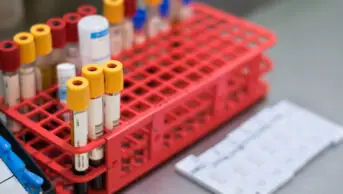
Shutterstock.com
As pharmacists, we work hard to ensure our patients receive safe and cost-effective care to optimise resources and reduce drug-related morbidity/mortality. But what if we challenged the comfort of our processes? The question is not ‘what if?’, it is ‘how?’.
My research interests stemmed from my Saturday job as a healthcare assistant in community pharmacy. Here, I observed a high frequency of patient-reported side effects from moisturisers. I also found it challenging to advise patients on selecting a moisturiser owing to a lack of evidence-based guidance.
For my university dissertation, I captured these issues through a patient/healthcare professional survey that I co-designed with the Centre for Evidence Based Dermatology. In 2016, with support and networking, I published our findings, which contributed to a Cochrane systematic review[1,2]. I was proud of my accomplishment but yearned to investigate these issues further, once qualified.
I discovered that selecting moisturisers or topical corticosteroids with certain physiochemical and therapeutic properties was a bit like baking — my brownie-making skills have improved exponentially as a result
I explored the literature and initiated conversations with experts, which helped me to identify that the composition of a moisturiser was an important piece in solving the puzzle; however, this concept appeared poorly understood in the clinical setting. Upon identifying this gap, I sought mentorship from a distinguished expert from Switzerland who happened to be a clinical academic pharmacist. Together, with input from patients and clinicians, we constructed a narrative review to educate healthcare professionals on the clinical significance of moisturiser composition[3]. This had an interesting connection with topical corticosteroid potency classification — an ambiguous issue — so we angled our publication accordingly. I discovered that selecting moisturisers or topical corticosteroids with certain physiochemical and therapeutic properties was a bit like baking — my brownie-making skills have improved exponentially as a result.
By introducing our work to my hospital seniors, I created local opportunities to provide advice to clinicians and formulary teams as part of my residency. Publishing in a Medline/Embase-indexed journal also created remote opportunities for me to contribute to further reviews[4]. However, I was aware that I required further clinical and academic training but I was stumped on how to fund or incorporate my research and development alongside my full-time role. I needed protected time, as well as a local clinical-academic role model, to help guide me and facilitate translation of my work.
Undertaking a trust-funded clinical diploma during my transition to a senior pharmacist provided an opportunity to enhance my medicines optimisation skillset through a variety of activities. These included constructing a systematic review to support an independent funding request for an unlicensed treatment, auditing compliance with, and effectiveness of, a vancomycin continuous infusion protocol, plus changing associated guidance through a quality improvement project (QIP). I also networked through events within my trust and my diploma-hosting university throughout this period. This introduced me to locally and nationally-funded research training opportunities, exciting developments in digital technologies and influential clinical-academics with similar interests.
I developed my research skills, ideas, connections and reflective practice though a funded postgraduate certificate
By choosing and creating diploma projects with my collaborators that complimented their interests — my own and my trust’s — I started to overcome barriers. I successfully applied to the trust’s ‘Chief Nurse Research Fellowship’ (CNRF), basing my application around my diploma vancomycin QIP to improve therapeutic drug monitoring.
During my weekly protected CNRF day, I developed my research skills, ideas, connections and reflective practice though a funded postgraduate certificate. In conjunction with my collaborators and pharmacy mentors, I also published my clinical diploma audit and developed leadership skills through research engagement activities[5]. These involved raising awareness, providing advice, representing pharmacy at clinical-academic groups and surveying nursing, midwifery and allied health professions’ views to inform trust research strategy/funding.
Collectively, the CNRF gave me with the time and training to construct a research proposal exploring novel digital therapeutic drug monitoring strategies to enhance patient care based on my own findings. It also assisted me in trialling a sustainable clinical academic post within my department and developing a subsequent plan for my clinical and academic progression towards a specialist pharmacist post and PhD proposal.
Combined, I feel the CNRF put me in a competitive position to secure a Health Education England/National Institute for Health Research (HEE/NIHR) Integrated Clinical and Practitioner Academic Pre-Doctoral Clinical and Practitioner Academic Fellowship (PCAF)[6]. This is a centrally-funded opportunity enabling me to pursue my ambitions through a part-funded MSc and salaried research role. I would have struggled to fund the rest of the MSc, as well as attend conferences and workshops that I identified to develop my PhD proposal, so I also reached out to Pharmacy Research UK (PRUK); a fantastic charity supporting aspiring pharmacy researchers to change clinical practice for the benefit of patients and the profession[7]. With a vision, commitment and support, I’ve created a life-changing and rewarding trajectory to improve patient care and pursue a consultant pharmacist post through the NIHR PCAF.
In my experience, the research journey is not well signposted and I am sure that I will encounter further obstacles; however, to get your foot in the door and to overcome challenges, I would recommend a few things:
- First, if you have an idea, fully understand the problem behind that idea, ascertain if there is a genuine need from stakeholders and if you have the resources and capability to explore it before committing further energy;
- Second, networking and working with the right people is a balancing act, but integral to success, so do some investigating to find the leaders in your field of interest;
- Finally, ensure that your research benefits all stakeholders. By demonstrating that your interests are associated with cost-savings and/or improving patient care quality, you increase your chances of integrating research into your role.
With the challenges facing healthcare and pharmacy’s status in the UK, there has never been a better time for pharmacists to optimise opportunities and embrace research.
Robert Oakley is a senior pharmacist at St George’s University Hospitals NHS Foundation Trust. His role is split working clinically and academically through a HEE/NIHR ICA Pre-doctoral Clinical Academic and Practitioner Fellowship.
- 1Oakley R, Lawton S. Views on unwanted effects of leave-on emollients and experiences surrounding their incidence. Dermatol Nurs 2016;15.http://eprints.nottingham.ac.uk/40443/1/DN%20Article.pdf
- 2van Zuuren EJ, Fedorowicz Z, Christensen R, et al. Emollients and moisturisers for eczema. Cochrane Database of Systematic Reviews. 2017;2020. doi:10.1002/14651858.cd012119.pub2
- 3Oakley R, Arents BWM, Lawton S, et al. Topical corticosteroid vehicle composition and implications for clinical practice. Clin Exp Dermatol. 2020;46:259–69. doi:10.1111/ced.14473
- 4Lax SJ, Harvey J, Axon E, et al. Strategies for using topical corticosteroids in children and adults with eczema. Cochrane Database of Systematic Reviews. 2022;2022. doi:10.1002/14651858.cd013356.pub2
- 5Oakley R, Bakrania P, Yau T, et al. P37 Variable adherence to and effectiveness of a vancomycin continuous infusion protocol within ICUs at a London tertiary-care hospital: a single-centre retrospective service evaluation. JAC-Antimicrobial Resistance. 2022;4. doi:10.1093/jacamr/dlac004.036
- 6HEE-NIHR Integrated Clinical and Practitioner Academic Programme. National Institute for Health and Care Research. https://www.nihr.ac.uk/explore-nihr/academy-programmes/hee-nihr-integrated-clinical-and-practitioner-academic-programme.htm (accessed Oct 2022).
- 7Mofidi D. NIHR Pre-Doctoral Clinical and Practitioner Academic Fellowship Partnership Update. Pharmacy Research UK. 2022.http://pharmacyresearchuk.org/nihr-pre-doctoral-clinical-and-practitioner-academic-fellowship-partnership-update/ (accessed Oct 2022).


